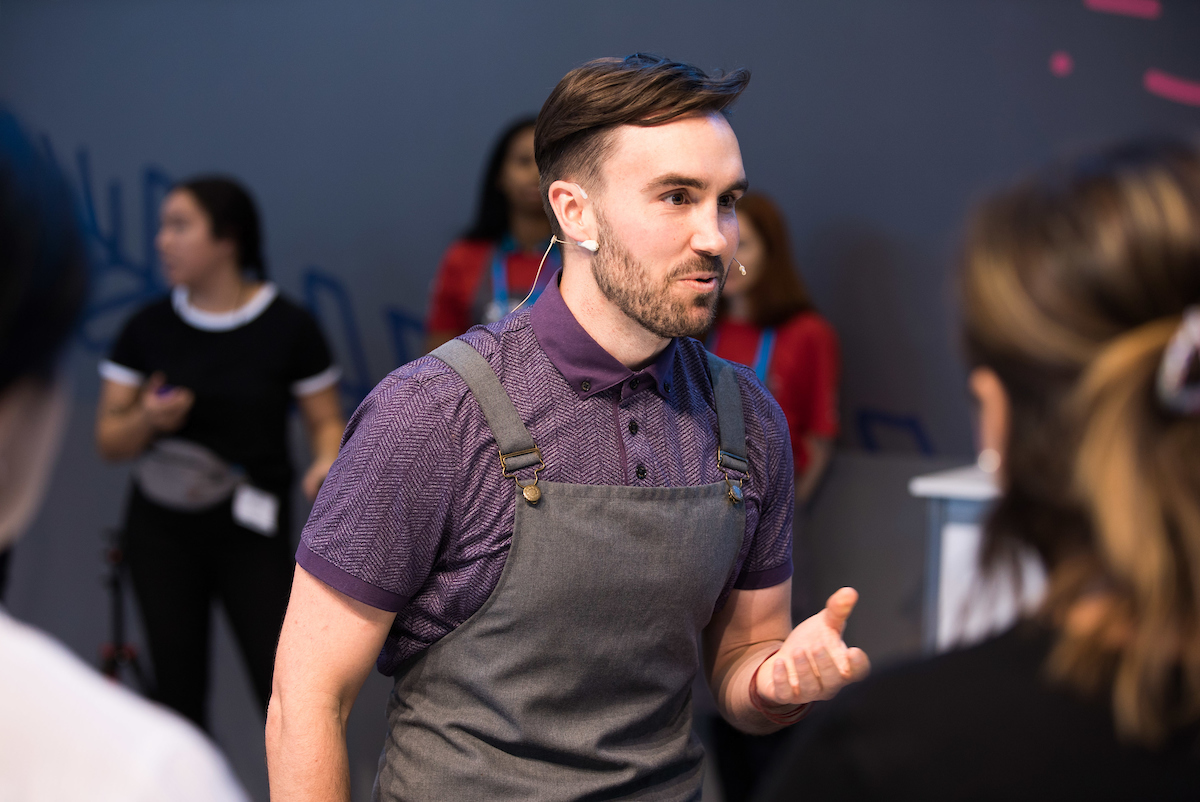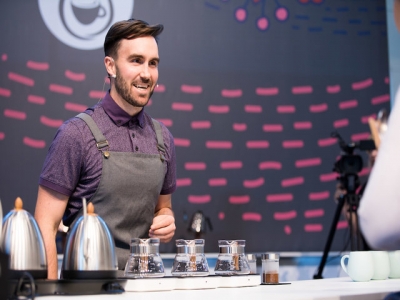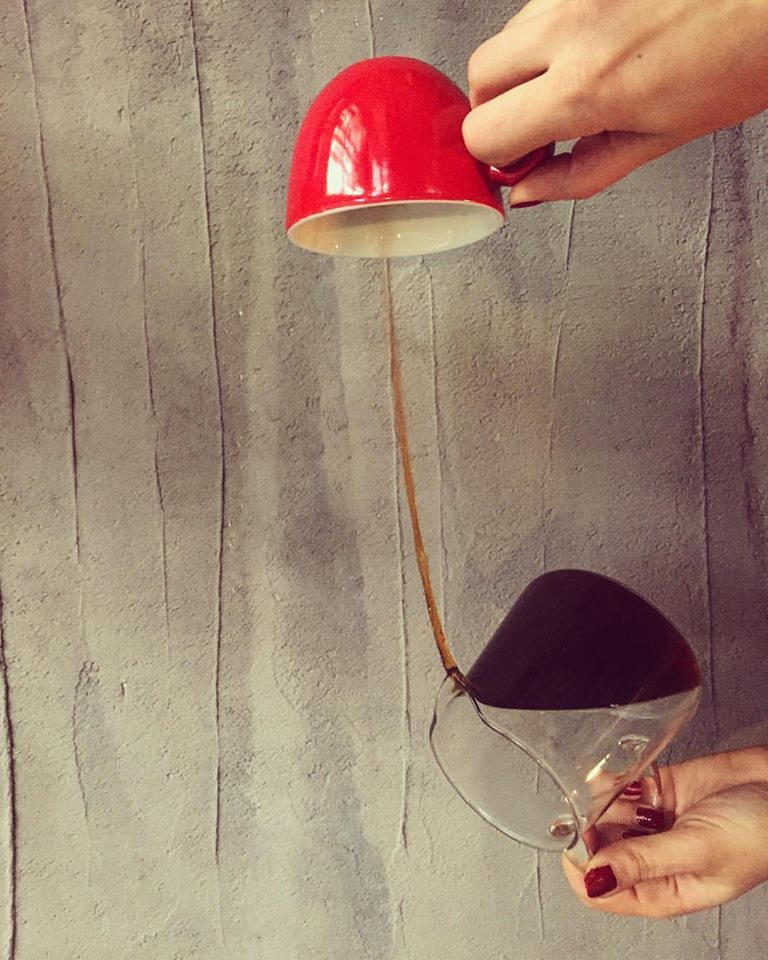by Sam Corra
Head Roaster & Quality Control of Ona Coffee,2nd World Brewers Champion 2017
ONA Coffee has always been deeply involved in competitions. We enjoy using them to better our skills behind the coffee machine and found that they were useful for getting honest feedback from our industry friends. We always tended to focus on Barista competitions and it really shaped and improved the style of coffee that we serve daily in our cafes. Two years ago, I decided to implement this same strategy and started competing in the Brewer’s Cup. The idea was to use the competition as a platform to gain valuable feedback and improve the quality of filter coffee that I was roasting. I discovered quickly that filter coffee was not only about the roasting, but just as much about the other variables that contribute to the final cup. I had no idea this path would eventually lead me to the world stage and to second place in the 2017 World Brewer’s Cup (WBrC) Championship in Budapest.
Factors for an amazing filter coffee:
Whilst I was preparing for WBrC, I looked into the different aspects that affect the brew quality and flavour the most. Naturally, choice of coffee is important – however, there are many different ways to alter a coffee’s perceived expression flavor and aroma. Two of the most important factors I looked at and discussed at the WBrC were Equipment and Brew water.
Equipment:
Brewing equipment and service vessels are an excellent way to manipulate the expression of flavor in coffee. When preparing for WBrC, I tested around 50 pourover brewers, keeping all variables the same apart from the brew cone. I was amazed to see how much the material and size of the brew cone could alter flavor and aroma from the same coffee prepared under the exact same recipes.

(credits to Jeff Hann for World Coffee Events)
For my routine, I selected to use the Hario V60 2-cup stainless steel pourover cones. I found that this best expressed the amazing qualities of the Finca Deborah Whole Cherry Carbonic Washed Process lot that I used and that the stainless steel material gave the most rounded and balanced expression of this coffee. Plastic material cones were usually balanced and clean, but had a muted feel to the flavors and acidity. Ceramic and glass both expressed this coffee’s flavors, aromas and especially the acidity – however, I found for this coffee that the higher thermo-stability of the materials led to over extraction of the finer grinds. This led to a dustier and drier finish in the higher extraction yields of 1.38-1.42 TDS (total dissolved solids) that I was targeting.
Next, I selected a two-cup cone for a 20g dose. I found the two-cup size allowed me to distribute the coffee grounds in a much shallower brew bed with a wider surface area then that of the 1-cup of same material. For my brewing method, this worked out a lot better as it gave me faster drainage through the puck without losing extraction yields. The speed of draining was essential, as I was letting all the water pass completely through the brew bed in each pour of my 5-staged brewing method. I noticed that with slow drainage, it would often result in lower extraction yields. Faster drainage allowed me to work with a coarser grind and achieve the promotion of cleaner, more vibrant flavors with rounder expression of body, without a drop in strength.
''One of the most important factors to brewing an amazing coffee experience is having a brew water that will best represent a coffee’s attributes.''
Next was to select a service vessel. I wanted something that would enhance aromatic and flavor perception of my brew when drinking. I found a 450ml ceramic wine glass-shaped mug was the best vessel to achieve this. The wider, rounder base and curved angled walls to a narrower opening allowed more aromatics to be trapped. When you went to take a sip, your whole nose was in the mug, smelling the concentrated aromatics and tasting at the same time. This increased the depth of the perceived flavors, enhancing one’s experience when drinking this coffee.

Brew water:
One of the most important factors to brewing an amazing coffee experience is having a brew water that will best represent a coffee’s attributes. An astonishing 98.6 – 98.7% of a filter coffee is made up by the water we brew with. In the past, I would have selected a water only on its TDS or GH (General hardness). These numbers tell us the amount of minerals in a water, but not what they are or how they will interact with a coffee’s qualities.
I wanted to have full control over building my own custom water source, so I started to read articles and even talk to chemists about common minerals found in most waters and how those minerals can be used manipulated to enhance a coffee’s flavor. I settled on a blend of three mineral sources; the first part to my water was magnesium from magnesium sulfate, also commonly referred to as Epsom Salts. I selected to use a food-grade source of this mineral that is designed for beer brewing. magnesium has the ability to bind to the lighter, bright notes of a coffee. For the Geisha varietal, this lifted acidity, the floral notes and promoted the light, bright fruit spectrum like that of citrus fruits.
The next part of my water was calcium, from calcium chloride. Most calcium chloride base minerals are in powdered form, but I found that a pre-dissolved solution like that used in yogurt making worked the best. Calcium binds to the sweeter, deeper fruit qualities in coffee and helps the development of sweetness and texture. It encouraged a rich, syrupy texture and dark fruit flavors of plum and blackcurrant.
The last aspect was the carbonate hardness. For this, I used potassium bicarbonate. Carbonate can dictate how the minerals will bind and dissolve with the coffee particles in brewing, as well as regulating alkalinity of the water source. In total, I had 140mL of combined mineral stocks, which I would add back to 860mL of purified water to make each litre (L) of brew water I desired.
One should note that this water was tailored specifically just for enhancing the qualities in my coffee. It will not work for every variety, process and origin of other coffees. The best way to build the perfect water is make the stock mineral solutions and experiment what works best.
''An amazing coffee experience is so much more than just sourcing exceptional coffees. It is about controlling all the factors that influence a coffee’s flavor and the qualities we can extract.''
Water recipe (for 1000mL/1L)
860mL purified water
80ppm (80mL) of a stock magnesium solution, 1000GH
40ppm (40mL) of a stock calcium solution (1000GH)
20ppm (20ml) of a 1000GH potassium bicarbonate stock solution to regulate the pH back to a neutral 7 reading and enhance a creamier body perception
2017 Brewer’s Cup Recipe:
20g Finca Deborah WCW, coarsely ground on Commandante grinder (38 kicks from finest setting )
300g 93 degree Celsius custom water
1 Hario 2-cup stainless steel V60
1 Hario 400mL wood handle decanter
For each pour, start in the center and circle outward until all grounds are soaked then return to center and pour in the remaining water. Wait until all water has drained through the brew bed before commencing the next pour.
1) 50g Bloom for 35sec (50g total weight)
2) 70g second pour at 35sec (120g total weight)
3) 60g third pour at 1:05min (180g total weight)
4) 60g fourth pour at 1:35min (240g total weight)
5) 60g final pour at 2:05min (300g total weight)
Total brew time 2:40-2:50 minutes
Lift V60 off at 3:30 minutes and serve
Finally...
An amazing coffee experience is so much more than just sourcing exceptional coffees. It is about controlling all the factors that influence a coffee’s flavor and the qualities we can extract. Remember that every small detail has the potential to impact a coffees perception and how we will judge that coffee experience. Controlling the variables allows you to dictate the experience and get the most out of your brew!





